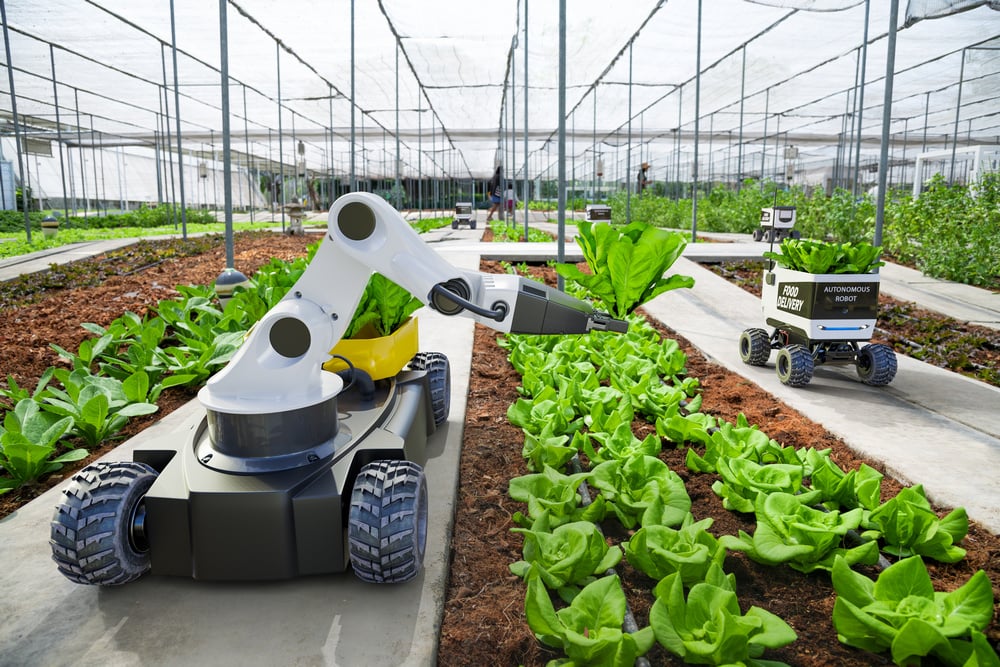In the face of growing global populations, climatic shifts, and finite resources, humanity is presented with an imposing challenge: how can we sustainably feed an estimated 9.7 billion people by 2050? The answer may lie at the intersection of agriculture and advanced technologies, specifically within the realm of Artificial Intelligence (AI) and Machine Learning (ML). These innovative tools are not only revolutionising industries across the globe but also steering a new direction for food production and distribution.
AI, the broader field that replicates human intelligence in machines, and its subset, ML, which uses statistical methods to enable machines to improve with experience, have found fertile ground in agriculture. Through intricate algorithms, predictive modelling, and data analysis, these technologies are optimising every aspect of the agricultural supply chain from sowing to harvesting and distribution.
On the farm, AI is transforming age-old practices. Precision agriculture, which relies on AI and ML, harnesses data from satellite imagery and drones to provide farmers with real-time analytics about crop health and soil conditions. These insights allow farmers to make timely and informed decisions, enhancing crop yield while reducing the usage of water, fertilisers and pesticides. Consequently, precision agriculture not only boosts the efficiency of food production but also diminishes its environmental impact.
Meanwhile, automated agricultural robots, or ‘agribots’, are taking on labour-intensive tasks like weeding, pruning, and harvesting. Equipped with AI and ML capabilities, these machines can identify and selectively remove weeds, accurately prune vines, and delicately pick ripe fruits, all the while minimising damage to plants and reducing the need for human labour.
Beyond the farm, AI is improving the post-harvest sector. In supply chain management, AI is deployed to predict market demand, optimise logistics, reduce waste, and ensure that food reaches consumers in the most efficient manner possible. ML algorithms sift through heaps of historical and real-time data, including weather patterns, holidays, and consumption trends, to accurately forecast demand. This ensures that overproduction and food wastage are minimised.
Despite the tremendous potential, the widespread adoption of AI in agriculture is not without hurdles. Issues surrounding data privacy, the digital divide between developed and developing nations, and the replacement of human labour are just some of the challenges that need addressing. Nevertheless, the promise of AI and ML in creating a more efficient and sustainable food system cannot be understated.
As we look towards a future of mounting food demand and dwindling resources, the fusion of agriculture with AI and ML presents an opportunity to reimagine and revolutionise the way we produce and distribute food. With every seed sown by a precision planter, every weed removed by an agribot, and every delivery optimised by an AI-powered supply chain, we take a step closer towards a future where hunger is a thing of the past. Feeding the world with AI is no longer a distant dream, but an evolving reality.
Related articles
-
Feeding the world with AI: how machine learning is revolutionising food production
In the face of growing global populations, climatic shifts, and finite resources, humanity is presented with an imposing challenge: how can we sustainably feed an estimated 9.7 billion people by 2050? The answer may lie at the intersection of agriculture and advanced technologies, specifically within the realm of Artificial Intelligence (AI) and Machine Learning (ML). […]
-
Cultivating the future: an introduction to cellular agriculture
There are moments in history when the confluence of science, innovation, and circumstances forces us to redefine what we thought possible. We stand at one such pivotal juncture today as we explore the frontiers of food production, specifically the revolutionary field of cellular agriculture. A concept straight out of science fiction a few years ago, […]
